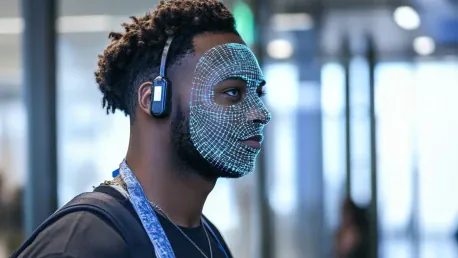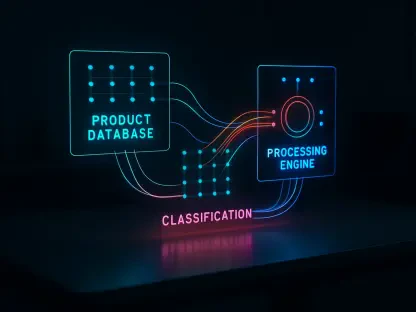The Department of Homeland Security (DHS) has recently released a report highlighting the impressive accuracy of the Transportation Security Administration’s (TSA) facial recognition systems. These biometric technologies have demonstrated an exceptional level of precision, successfully matching live faces to identification documents more than 99% of the time. Published on January 17, 2025, this report provides a comprehensive analysis of the performance and implications of these systems, showcasing the technological advancements and areas needing further scrutiny.
Accuracy and Performance across Demographics
The DHS conducted an extensive analysis involving over 1,600 volunteers from diverse demographic groups to evaluate the accuracy and performance of TSA’s facial recognition systems. The primary focus was on TSA’s CAT-2 systems, which perform “one-to-one” facial recognition by capturing real-time images of travelers’ faces and comparing them to their photo IDs. The results were remarkable, with the technologies maintaining an overall face matching accuracy exceeding 99%. Even among self-identified Black participants, the accuracy rate was an impressive 98%.
The comprehensive testing scenarios ensured that the evaluation covered a wide range of age, gender, race, and skin tone. This thorough approach was crucial in addressing concerns about potential biases in the technology. The findings indicated that the face capture and recognition processes were largely consistent across all demographic groups, taking an average of 23 seconds per person, reflecting the efficiency and reliability of the system in various contexts.
Mandate for Testing Compliance
The report was initiated following a directive issued by DHS in September 2023, which mandated extensive testing of facial recognition and face capture technologies. This directive aimed to ensure that these systems meet federal standards and are free from biases or inaccuracies. The goal was to enhance transparency and foster trust among travelers, lawmakers, and privacy advocates. During evaluations conducted in both 2023 and 2024, it was found that the technologies were largely consistent in their performance, highlighting the importance of rigorous testing.
This directive emphasized the necessity of ongoing monitoring to address any potential biases, particularly those that could impact ethnic and demographic minority groups. Maintaining the integrity and reliability of the biometric systems is crucial, and continual refinement is required to achieve uniform accuracy across all demographics. Such measures ensure that the technology not only performs accurately but also aligns with ethical standards and societal expectations regarding fairness and inclusivity.
Privacy Concerns
Despite the high accuracy rates, the use of biometric technologies has raised significant concerns over privacy and civil liberties. Lawmakers and privacy rights groups have voiced apprehensions regarding government surveillance and the broader implications for Americans’ personal data. These concerns highlight the critical need for stringent data handling protocols and transparency in the deployment of these technologies, ensuring that civil liberties are not compromised in the pursuit of enhanced security measures.
Officials from the TSA and DHS have stressed that the facial recognition systems do not store data automatically. Instead, the photos are deleted once a match has been made, and any anomalies in matching are addressed by TSA officers. However, the systems can be adjusted to log data temporarily for testing purposes. This approach aims to strike a balance between maintaining the effectiveness of the technology and addressing privacy concerns, thereby fostering public trust and acceptance of biometric security measures.
Legislative Scrutiny
The adoption of biometric tools has attracted bipartisan interest from Congress, with members from both parties urging oversight bodies, such as the Government Accountability Office (GAO) and DHS Inspector General, to review TSA’s use of facial recognition. They have called for assurance that the TSA operates within its legal boundaries and responsibly manages travelers’ biometric data. This legislative scrutiny acts as a crucial check on the implementation of these technologies, ensuring they are deployed ethically and without infringing on civil liberties.
Calls for reviews by oversight authorities reflect bipartisan agreement on the necessity for regulatory oversight to guarantee the responsible use of biometric data. By establishing a framework for consistent monitoring and evaluation, legislative bodies aim to ensure that the deployment of facial recognition technologies aligns with legal standards and public expectations. This process helps build public confidence and reassures travelers that their personal information is managed with the utmost care and responsibility.
Additional Findings
The DHS report also evaluated the PreCheck’s Touchless Identity System, currently in its pilot phase, revealing key insights into emerging technologies. The face capture technology in this system had a 93% success rate, primarily due to issues with the face detection algorithm. However, the facial recognition component of this system was found to be accurate over 99% of the time. These findings highlight the importance of addressing technical issues to ensure the overall effectiveness of the system.
Challenges in face capture underscore the need for continual refinement, especially as these technologies are integrated into security protocols. Despite these challenges, the high accuracy of the facial recognition component is a positive indicator of the potential for these technologies to enhance airport security. By focusing on refining the detection algorithms, the TSA and DHS can ensure that future iterations of the technology maintain high standards of accuracy while addressing any shortcomings identified during pilot testing phases.
Technological Advancements and Ethical Considerations
The Department of Homeland Security (DHS) recently published a detailed report emphasizing the remarkable accuracy of the Transportation Security Administration’s (TSA) facial recognition systems. The DHS found that these advanced biometric technologies boast an impressive precision rate, successfully matching live faces to identification documents over 99% of the time. Released on January 17, 2025, the report thoroughly explores the performance and significant implications of these systems on security and privacy. It highlights their technological advancements, showcasing how they have revolutionized identity verification at airports and other critical points of entry. However, the report also identifies areas needing further evaluation and improvement, particularly concerning privacy concerns and ethical considerations. As TSA continues to implement and refine these systems, stakeholders will need to balance the benefits of increased security with the necessary scrutiny to ensure these technologies are used responsibly and equitably.









